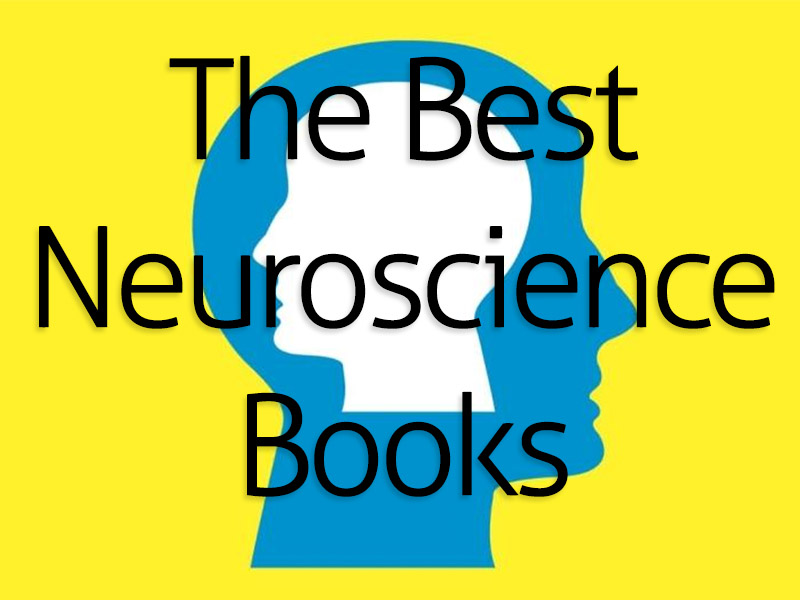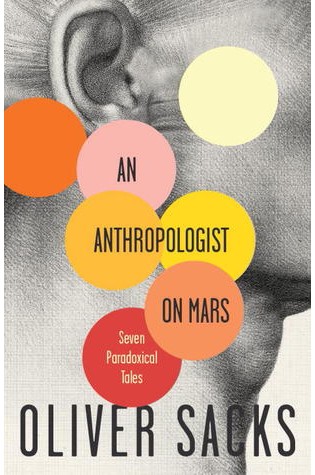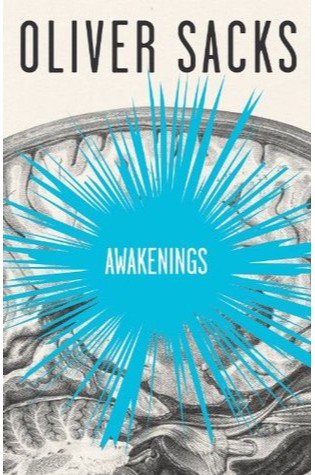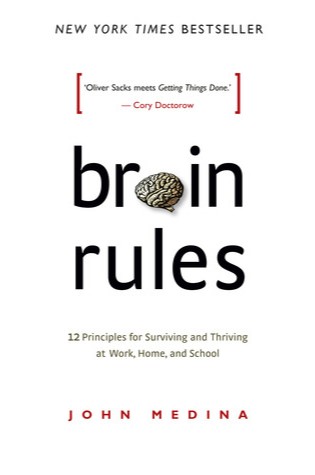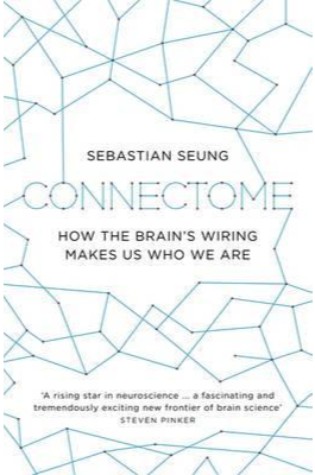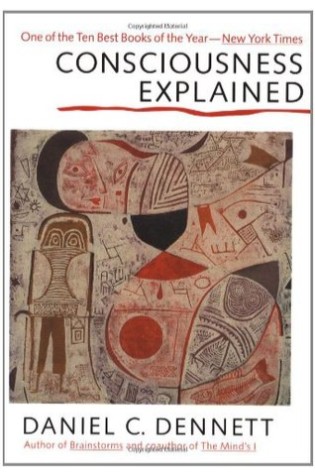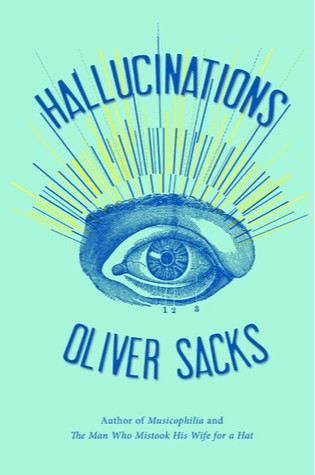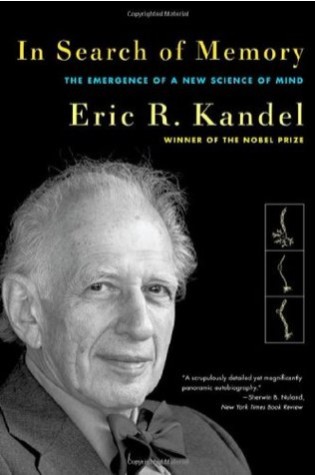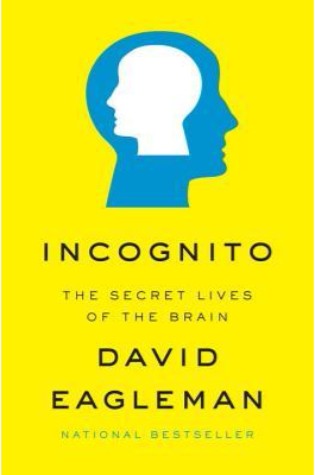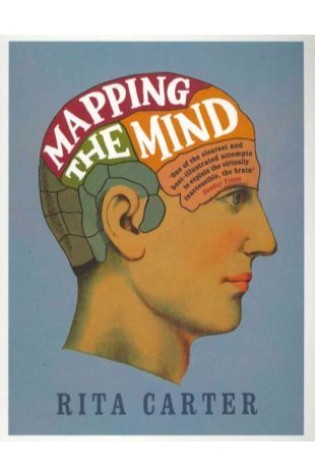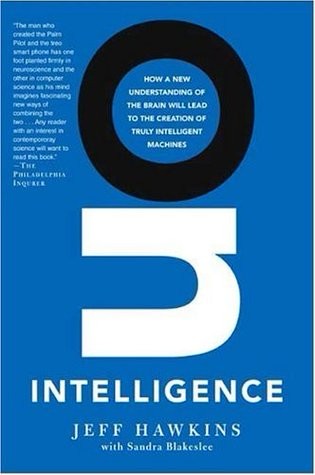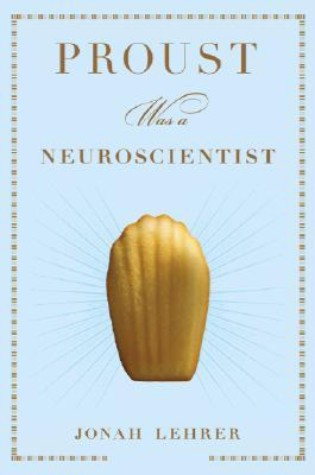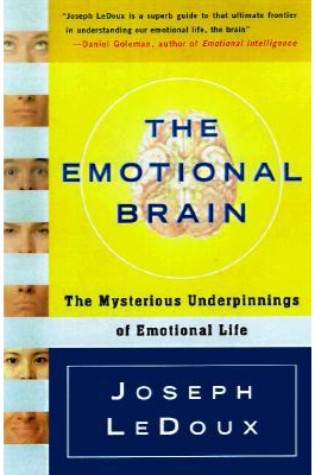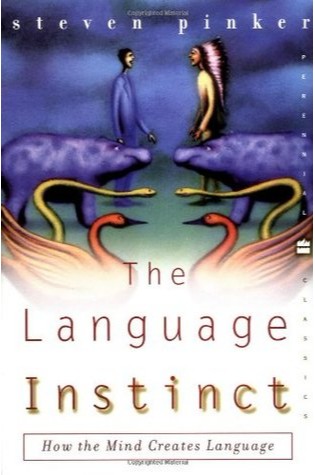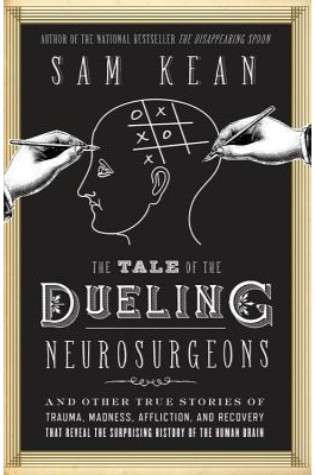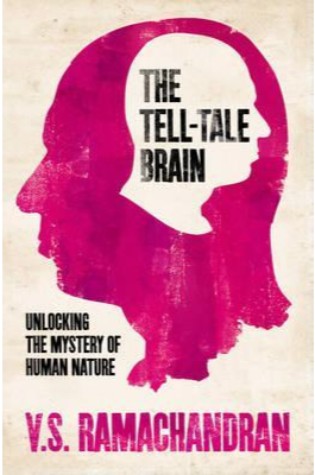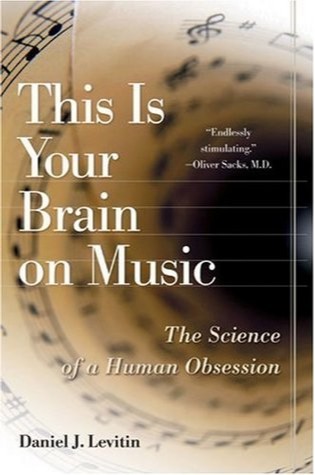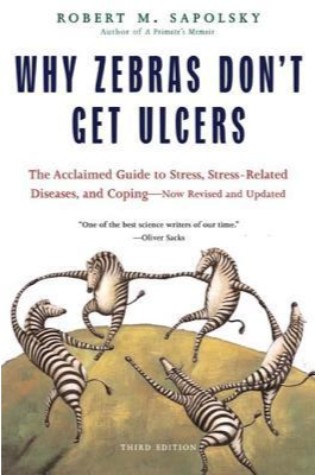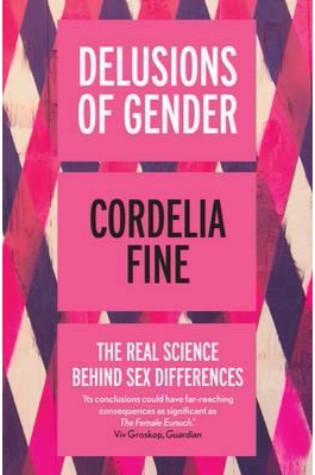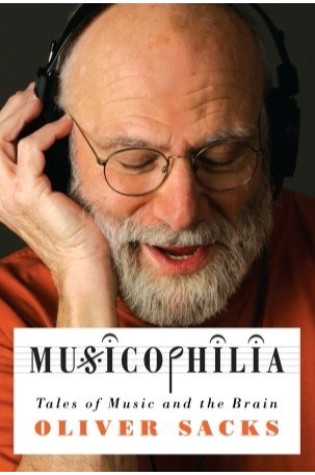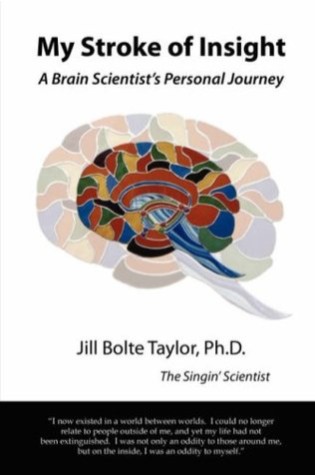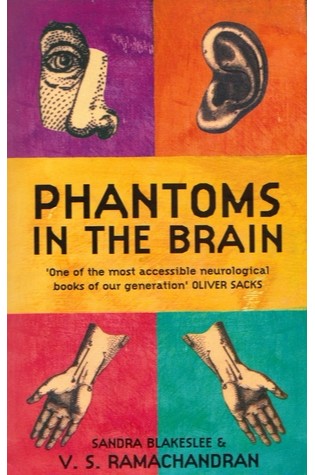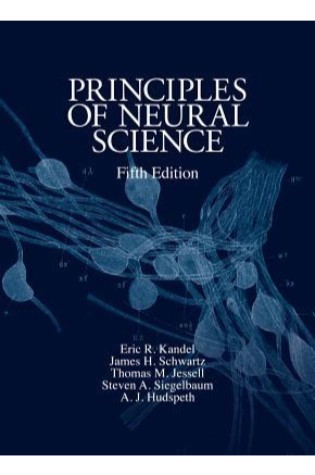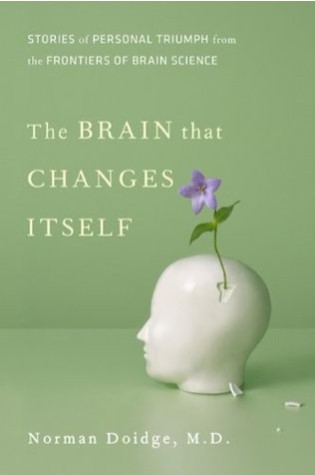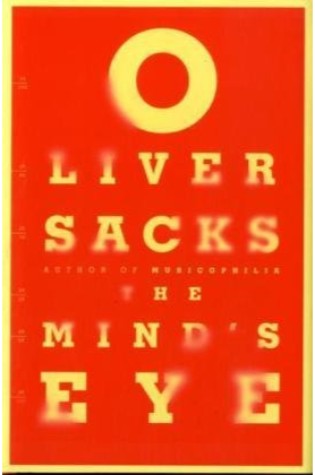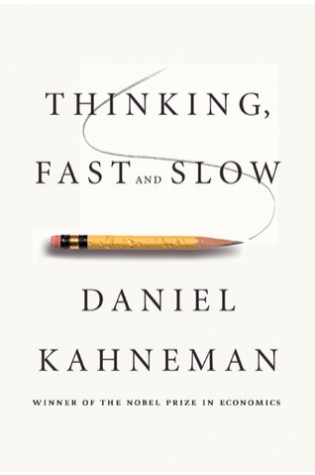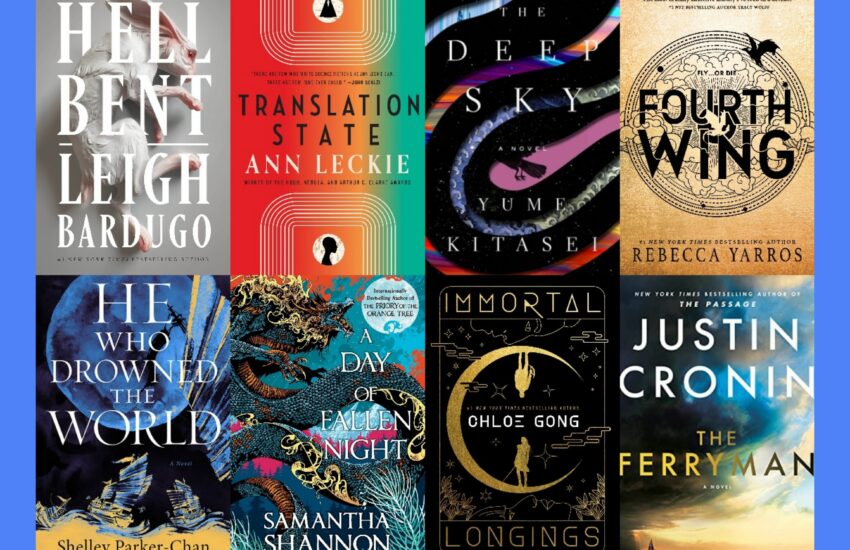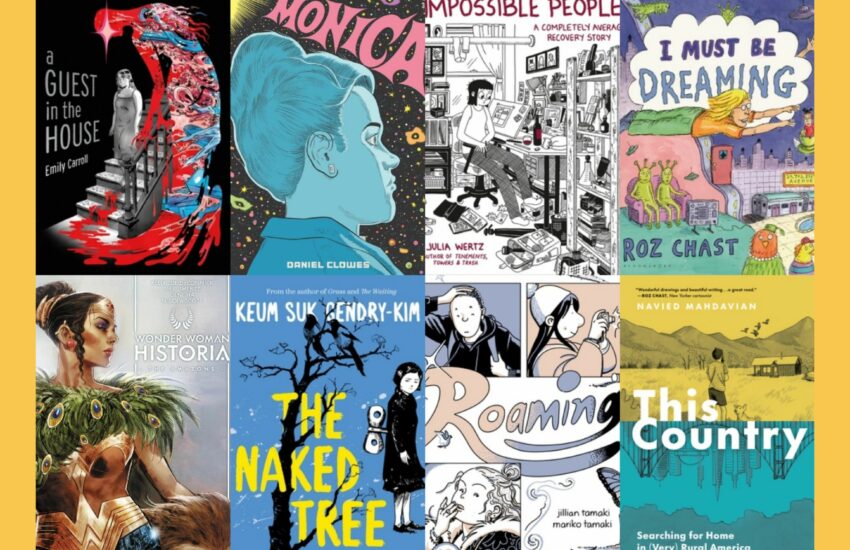The Best Books About Neuroscience
“What are the best books about Neuroscience & Neurology?” We looked at 139 of the top books, aggregating and ranking them so we could answer that very question!
The top 28 titles, all appearing on 2 or more “Best Neuroscience” books lists, are ranked below by how many times they appear. The remaining 100+ books, as well as the lists we used, are in alphabetical order on the bottom of the page.
For more books about how the brain works you can also check out our Best Brain & Mind list.
Happy Scrolling!
Top 28 Neuroscience Books
28 .) An Anthropologist on Mars by Oliver Sacks
Lists It Appears On:
- Neuroamer
- Goodreads
To these seven narratives of neurological disorder Dr. Sacks brings the same humanity, poetic observation, and infectious sense of wonder that are apparent in his bestsellers Awakenings and The Man Who Mistook His Wife for a Hat. These men, women, and one extraordinary child emerge as brilliantly adaptive personalities, whose conditions have not so much debilitated them as ushered them into another reality.
27 .) Awakenings by Oliver Sacks
Lists It Appears On:
- Neuroamer
- Goodreads
Awakenings–which inspired the major motion picture–is the remarkable story of a group of patients who contracted sleeping-sickness during the great epidemic just after World War I. Frozen for decades in a trance-like state, these men and women were given up as hopeless until 1969, when Dr. Oliver Sacks gave them the then-new drug L-DOPA, which had an astonishing, explosive, “awakening” effect. Dr. Sacks recounts the moving case histories of his patients, their lives, and the extraordinary transformations which went with their reintroduction to a changed world.
26 .) Brain Rules: 12 Principles for Surviving and Thriving at Work, Home, and School by John Medina
Lists It Appears On:
- Wikipedia
- Goodreads
“Most of us have no idea what’s really going on inside our heads. Yet brain scientists have uncovered details every business leader, parent, and teacher should know—like the need for physical activity to get your brain working its best.
How do we learn? What exactly do sleep and stress do to our brains? Why is multi-tasking a myth? Why is it so easy to forget—and so important to repeat new knowledge? Is it true that men and women have different brains?
In Brain Rules, Dr. John Medina, a molecular biologist, shares his lifelong interest in how the brain sciences might influence the way we teach our children and the way we work. In each chapter, he describes a brain rule—what scientists know for sure about how our brains work—and then offers transformative ideas for our daily lives.”
25 .) Connectome: How the Brain’s Wiring Makes Us Who We Are by Sebastian Seung
Lists It Appears On:
- Wikipedia
- Goodreads
“Every person is unique, but science has struggled to pinpoint where, precisely, that uniqueness resides. Our genome may determine our eye color and even aspects of our character. But our friendships, failures, and passions also shape who we are. The question is: how?
Sebastian Seung is at the forefront of a revolution in neuroscience. He believes that our identity lies not in our genes, but in the connections between our brain cells—our particular wiring. Seung and a dedicated group of researchers are leading the effort to map these connections, neuron by neuron, synapse by synapse. It’s a monumental effort, but if they succeed, they will uncover the basis of personality, identity, intelligence, memory, and perhaps disorders such as autism and schizophrenia.
Connectome is a mind-bending adventure story that presents a daring scientific and technological vision for understanding what makes us who we are, both as individuals and as a species. “
24 .) Consciousness Explained by Daniel C. Dennett
Lists It Appears On:
- The Telegraph
- Goodreads
Advances a new theory of consciousness based on insights gleaned from the fields of neuroscience, psychology, and artificial intelligence, and clears away obsolete myths about the process of thinking in conscious beings
23 .) Descartes’ Error: Emotion, Reason and the Human Brain by António R. Damásio
Lists It Appears On:
- Five Books
- Goodreads
Since Descartes famously proclaimed, “I think, therefore I am,” science has often overlooked emotions as the source of a person’s true being. Even modern neuroscience has tended, until recently, to concentrate on the cognitive aspects of brain function, disregarding emotions. This attitude began to change with the publication of Descartes’ Error in 1995.
22 .) Hallucinations by Oliver Sacks
Lists It Appears On:
- Neuroamer
- Goodreads
To many people, hallucinations imply madness, but in fact they are a common part of the human experience. These sensory distortions range from the shimmering zigzags of a visual migraine to powerful visions brought on by fever, injuries, drugs, sensory deprivation, exhaustion, or even grief. Hallucinations doubtless lie behind many mythological traditions, literary inventions, and religious epiphanies. Drawing on his own experiences, a wealth of clinical cases from among his patients, and famous historical examples ranging from Dostoevsky to Lewis Carroll, the legendary neurologist Oliver Sacks investigates the mystery of these sensory deceptions: what they say about the working of our brains, how they have influenced our folklore and culture, and why the potential for hallucination is present in us all.
21 .) How to Create a Mind: The Secret of Human Thought Revealed by Ray Kurzweil
Lists It Appears On:
- Wikipedia
- Goodreads
“Ray Kurzweil is arguably today’s most influential—and often controversial—futurist. In How to Create a Mind, Kurzweil presents a provocative exploration of the most important project in human-machine civilization—reverse engineering the brain to understand precisely how it works and using that knowledge to create even more intelligent machines.
Kurzweil discusses how the brain functions, how the mind emerges from the brain, and the implications of vastly increasing the powers of our intelligence in addressing the world’s problems. He thoughtfully examines emotional and moral intelligence and the origins of consciousness and envisions the radical possibilities of our merging with the intelligent technology we are creating.”
20 .) In Search of Memory: The Emergence of a New Science of Mind by Eric R. Kandel
Lists It Appears On:
- Neuroamer
- Goodreads
Memory binds our mental life together. We are who we are in large part because of what we learn and remember. But how does the brain create memories? Nobel Prize winner Eric R. Kandel intertwines the intellectual history of the powerful new science of the mind―a combination of cognitive psychology, neuroscience, and molecular biology―with his own personal quest to understand memory. A deft mixture of memoir and history, modern biology and behavior, In Search of Memory brings readers from Kandel’s childhood in Nazi-occupied Vienna to the forefront of one of the great scientific endeavors of the twentieth century: the search for the biological basis of memory.
19 .) Incognito: The Secret Lives of the Brain by David Eagleman
Lists It Appears On:
- Wikipedia
- Goodreads
In this sparkling and provocative book, renowned neuroscientist David Eagleman navigates the depths of the subconscious brain to illuminate its surprising mysteries. Why can your foot move halfway to the brake pedal before you become consciously aware of danger ahead? Is there a true Mel Gibson? How is your brain like a conflicted democracy engaged in civil war? What do Odysseus and the subprime mortgage meltdown have in common? Why are people whose names begin with J more like to marry other people whose names begin with J? And why is it so difficult to keep a secret?
18 .) Mapping the Mind by Rita Carter
Lists It Appears On:
- Neuroamer
- Goodreads
Today a brain scan reveals our thoughts and moods as clearly as an X-ray reveals our bones. We can actually observe a person’s brain registering a joke or experiencing a painful memory. In Mapping the Mind, award-winning journalist Rita Carter draws on the latest imaging technology and science to chart how human behavior and personality reflect the biological mechanisms behind thought and emotion. This acclaimed book, a complete visual guide to the coconut-sized, wrinkled gray mass we carry around inside our heads, has now been completely revised and updated throughout. Among many other topics, Carter explores obsessions and addictions, the differences between men’s and women’s brains, and memory.
17 .) On Intelligence: How a New Understanding of the Brain Will Lead to the Creation of Truly Intelligent Machines by Jeff Hawkins
Lists It Appears On:
- Neuroamer
- Goodreads
“Jeff Hawkins, the man who created the PalmPilot, Treo smart phone, and other handheld devices, has reshaped our relationship to computers. Now he stands ready to revolutionize both neuroscience and computing in one stroke, with a new understanding of intelligence itself.
Hawkins develops a powerful theory of how the human brain works, explaining why computers are not intelligent and how, based on this new theory, we can finally build intelligent machines.
The brain is not a computer, but a memory system that stores experiences in a way that reflects the true structure of the world, remembering sequences of events and their nested relationships and making predictions based on those memories. It is this memory-prediction system that forms the basis of intelligence, perception, creativity, and even consciousness.”
16 .) Proust Was a Neuroscientist by Jonah Lehrer
Lists It Appears On:
- Wikipedia
- Goodreads
“In this technology-driven age, it’s tempting to believe that science can solve every mystery. After all, science has cured countless diseases and even sent humans into space. But as Jonah Lehrer argues in this sparkling debut, science is not the only path to knowledge. In fact, when it comes to understanding the brain, art got there first.
Taking a group of artists — a painter, a poet, a chef, a composer, and a handful of novelists — Lehrer shows how each one discovered an essential truth about the mind that science is only now rediscovering. We learn, for example, how Proust first revealed the fallibility of memory; how George Eliot discovered the brain’s malleability; how the French chef Escoffier discovered umami (the fifth taste); how Cézanne worked out the subtleties of vision; and how Gertrude Stein exposed the deep structure of language — a full half-century before the work of Noam Chomsky and other linguists. It’s the ultimate tale of art trumping science.”
15 .) The Emotional Brain: The Mysterious Underpinnings of Emotional Life by Joseph E. Ledoux
Lists It Appears On:
- Neuroamer
- Goodreads
What happens in our brains to make us feel fear, love, hate, anger, joy? Do we control our emotions, or do they control us? Do animals have emotions? How can traumatic experiences in early childhood influence adult behavior, even though we have no conscious memory of them? In The Emotional Brain, Joseph LeDoux investigates the origins of human emotions and explains that many exist as part of complex neural systems that evolved to enable us to survive.
14 .) The Language Instinct: How the Mind Creates Language by Stephen Pinker
Lists It Appears On:
- Neuroamer
- Goodreads
In this classic, the world’s expert on language and mind lucidly explains everything you always wanted to know about language: how it works, how children learn it, how it changes, how the brain computes it, and how it evolved. With deft use of examples of humor and wordplay, Steven Pinker weaves our vast knowledge of language into a compelling story: language is a human instinct, wired into our brains by evolution.
13 .) The Tale of the Dueling Neurosurgeons: The History of the Human Brain as Revealed by Sam Kean
Lists It Appears On:
- Wikipedia
- Goodreads
Early studies of the functions of the human brain used a simple method: wait for misfortune to strike-strokes, seizures, infectious diseases, lobotomies, horrendous accidents-and see how the victim coped. In many cases survival was miraculous, and observers could only marvel at the transformations that took place afterward, altering victims’ personalities. An injury to one section can leave a person unable to recognize loved ones; some brain trauma can even make you a pathological gambler, pedophile, or liar. But a few scientists realized that these injuries were an opportunity for studying brain function at its extremes. With lucid explanations and incisive wit, Sam Kean explains the brain’s secret passageways while recounting forgotten stories of common people whose struggles, resiliency, and deep humanity made modern neuroscience possible.
12 .) The Tell-Tale Brain: A Neuroscientist’s Quest for What Makes Us Human by V.S. Ramachandran
Lists It Appears On:
- Wikipedia
- Goodreads
In this landmark work, V. S. Ramachandran investigates strange, unforgettable casesâfrom patients who believe they are dead to sufferers of phantom limb syndrome. With a storytellerâs eye for compelling case studies and a researcherâs flair for new approaches to age-old questions, Ramachandran tackles the most exciting and controversial topics in brain science, including language, creativity, and consciousness.
11 .) This Is Your Brain on Music: The Science of a Human Obsession by Daniel J. Levitin
Lists It Appears On:
- Wikipedia
- Goodreads
In this groundbreaking union of art and science, rocker-turned-neuroscientist Daniel J. Levitin explores the connection between music?its performance, its composition, how we listen to it, why we enjoy it?and the human brain. Drawing on the latest research and on musical examples ranging from Mozart to Duke Ellington to Van Halen
10 .) Why Zebras Don’t Get Ulcers: The Acclaimed Guide to Stress, Stress-Related Diseases, and Coping by Robert M. Sapolsky
Lists It Appears On:
- LeaderChat
- Neuroamer
“As Sapolsky explains, most of us do not lie awake at night worrying about whether we have leprosy or malaria. Instead, the diseases we fear-and the ones that plague us now-are illnesses brought on by the slow accumulation of damage, such as heart disease and cancer. When we worry or experience stress, our body turns on the same physiological responses that an animal’s does, but we do not resolve conflict in the same way-through fighting or fleeing. Over time, this activation of a stress response makes us literally sick.
Combining cutting-edge research with a healthy dose of good humor and practical advice, Why Zebras Don’t Get Ulcers explains how prolonged stress causes or intensifies a range of physical and mental afflictions, including depression, ulcers, colitis, heart disease, and more. It also provides essential guidance to controlling our stress responses. This new edition promises to be the most comprehensive and engaging one yet.”
9 .) Delusions of Gender: How Our Minds, Society, and Neurosexism Create Difference by Cordelia Fine
Lists It Appears On:
- Wikipedia
- Dame
- Goodreads
“It’s the twenty-first century, and although we tried to rear unisex children―boys who play with dolls and girls who like trucks―we failed. Even though the glass ceiling is cracked, most women stay comfortably beneath it. And everywhere we hear about vitally important “hardwired” differences between male and female brains. The neuroscience that we read about in magazines, newspaper articles, books, and sometimes even scientific journals increasingly tells a tale of two brains, and the result is more often than not a validation of the status quo. Women, it seems, are just too intuitive for math; men too focused for housework.
Drawing on the latest research in neuroscience and psychology, Cordelia Fine debunks the myth of hardwired differences between men’s and women’s brains, unraveling the evidence behind such claims as men’s brains aren’t wired for empathy and women’s brains aren’t made to fix cars. She then goes one step further, offering a very different explanation of the dissimilarities between men’s and women’s behavior. Instead of a “male brain” and a “female brain,” Fine gives us a glimpse of plastic, mutable minds that are continuously influenced by cultural assumptions about gender.”
8 .) Musicophilia: Tales of Music and the Brain by Oliver Sacks
Lists It Appears On:
- Wikipedia
- Neuroamer
- Goodreads
With the same trademark compassion and erudition he brought to The Man Who Mistook His Wife for a Hat, Oliver Sacks explores the place music occupies in the brain and how it affects the human condition. In Musicophilia, he shows us a variety of what he calls “musical misalignments.” Among them: a man struck by lightning who suddenly desires to become a pianist at the age of forty-two; an entire group of children with Williams syndrome, who are hypermusical from birth; people with “amusia,” to whom a symphony sounds like the clattering of pots and pans; and a man whose memory spans only seven seconds-for everything but music.
7 .) My Stroke of Insight: A Brain Scientists’s Personal Journey by Jill Bolte Taylor
Lists It Appears On:
- Goodreads
- Dame
- Neuroamer
On December 10, 1996, Jill Bolte Taylor, a thirty-seven- year-old Harvard-trained brain scientist experienced a massive stroke in the left hemisphere of her brain. As she observed her mind deteriorate to the point that she could not walk, talk, read, write, or recall any of her life-all within four hours-Taylor alternated between the euphoria of the intuitive and kinesthetic right brain, in which she felt a sense of complete well-being and peace, and the logical, sequential left brain, which recognized she was having a stroke and enabled her to seek help before she was completely lost. It would take her eight years to fully recover.
6 .) Phantoms in the Brain: Probing the Mysteries of the Human Mind by V.S. Ramachandran
Lists It Appears On:
- Wikipedia
- Neuroamer
- Goodreads
Neuroscientist V.S. Ramachandran is internationally renowned for uncovering answers to the deep and quirky questions of human nature that few scientists have dared to address. His bold insights about the brain are matched only by the stunning simplicity of his experiments — using such low-tech tools as cotton swabs, glasses of water and dime-store mirrors. In Phantoms in the Brain, Dr. Ramachandran recounts how his work with patients who have bizarre neurological disorders has shed new light on the deep architecture of the brain, and what these findings tell us about who we are, how we construct our body image, why we laugh or become depressed, why we may believe in God, how we make decisions, deceive ourselves and dream, perhaps even why we’re so clever at philosophy, music and art.
5 .) Principles of Neural Science by Eric R. Kandel
Lists It Appears On:
- NeuWrite West
- Wikipedia
- Goodreads
In this classic text, prominent researchers in the field expertly survey the entire spectrum of neural science, giving an up-to-date, unparalleled view of the discipline for anyone who studies brain and mind. Here, in one remarkable volume, is the current state of neural science knowledge―ranging from molecules and cells, to anatomic structures and systems, to the senses and cognitive functions―all supported by more than 900 precise, full-color illustrations. In addition to clarifying complex topics, the book also benefits from a cohesive organization, beginning with an insightful overview of the interrelationships between the brain, nervous system, genes, and behavior. Principles of Neural Science then proceeds with an in-depth examination of the molecular and cellular biology of nerve cells, synaptic transmission, and the neural basis of cognition. The remaining sections illuminate how cells, molecules, and systems give us sight, hearing, touch, movement, thought, learning, memories, and emotions.
4 .) The Brain That Changes Itself: Stories of Personal Triumph from the Frontiers of Brain Science by Norman Doidge
Lists It Appears On:
- Wikipedia
- Neuroamer
- Goodreads
An astonishing new science called “neuroplasticity” is overthrowing the centuries-old notion that the human brain is immutable. In this revolutionary look at the brain, psychiatrist and psychoanalyst Norman Doidge, M.D., provides an introduction to both the brilliant scientists championing neuroplasticity and the people whose lives they’ve transformed. From stroke patients learning to speak again to the remarkable case of a woman born with half a brain that rewired itself to work as a whole, The Brain That Changes Itself will permanently alter the way we look at our brains, human nature, and human potential.
3 .) The Mind’s Eye by Oliver Sacks
Lists It Appears On:
- Wikipedia
- Goodreads
- Neuroamer
With compassion and insight, Dr. Oliver Sacks again illuminates the mysteries of the brain by introducing us to some remarkable characters, including Pat, who remains a vivacious communicator despite the stroke that deprives her of speech, and Howard, a novelist who loses the ability to read. Sacks investigates those who can see perfectly well but are unable to recognize faces, even those of their own children. He describes totally blind people who navigate by touch and smell; and others who, ironically, become hyper-visual. Finally, he recounts his own battle with an eye tumor and the strange visual symptoms it caused. As he has done in classics like The Man Who Mistook his Wife for a Hat and Awakenings, Dr. Sacks shows us that medicine is both an art and a science, and that our ability to imagine what it is to see with another person’s mind is what makes us truly human.
2 .) Thinking, Fast and Slow by Daniel Kahneman
Lists It Appears On:
- ELearningMind
- Neuroamer
- Goodreads
In the international bestseller, Thinking, Fast and Slow, Daniel Kahneman, the renowned psychologist and winner of the Nobel Prize in Economics, takes us on a groundbreaking tour of the mind and explains the two systems that drive the way we think. System 1 is fast, intuitive, and emotional; System 2 is slower, more deliberative, and more logical. The impact of overconfidence on corporate strategies, the difficulties of predicting what will make us happy in the future, the profound effect of cognitive biases on everything from playing the stock market to planning our next vacation―each of these can be understood only by knowing how the two systems shape our judgments and decisions.
1 .) The Man Who Mistook His Wife For A Hat, And Other Clinical Tales by Oliver Sacks
Lists It Appears On:
- NeuWrite West
- Neuroamer
- Goodreads
- The Telegraph
If inconceivably strange, these brilliant tales remain, in Dr. Sacks’s splendid and sympathetic telling, deeply human. They are studies of life struggling against incredible adversity, and they enable us to enter the world of the neurologically impaired, to imagine with our hearts what it must be to live and feel as they do. A great healer, Sacks never loses sight of medicine’s ultimate responsibility: “the suffering, afflicted, fighting human subject.”
The 100+ Additional Best Neuroscience Books
| # | Books | Authors | Lists |
| (Titles Appear On 1 List Each) | |||
| 29 | A Brief Tour of Human Consciousness: From Impostor Poodles to Purple Numbers | V.S. Ramachandran | Goodreads |
| 30 | A Natural History of the Senses | Dame | |
| 31 | Advances in Neurotoxicology | Elsevier | |
| 32 | An Alchemy of Mind | Diane Ackerman | Dame |
| 33 | Animal Models for Examining Social Influences on Drug Addiction | Elsevier | |
| 34 | Apprentice to Genius: The Making of a Scientific Dynasty | Robert Kanigel | Neuroamer |
| 35 | Atlas of the Human Brain | Juergen K. Mai; Joseph K. Assheuer; George Paxinos | Dickinson |
| 36 | Behavioral Neurobiology | Thomas Carew. | NeuWrite West |
| 37 | Bicameralism | Wikipedia | |
| 38 | Bipolar Disorder Vulnerability | Elsevier | |
| 39 | Brain Renaissance | Wikipedia | |
| 40 | Buddha’s Brain: The Practical Neuroscience of Happiness, Love, and Wisdom | Rick Hanson | Goodreads |
| 41 | Cerebral Lateralization and Cognition | Elsevier | |
| 42 | Consciousness and the Brain: Deciphering How the Brain Codes Our Thoughts | Stanislas Dehaene | Goodreads |
| 43 | Consilience | Edward O. Wilson | Five Books |
| 44 | Creating Mind | John Dowling. | NeuWrite West |
| 45 | Encyclopedia of the Human Brain | V. S. Ramachandran | Dickinson |
| 46 | Fixing My Gaze | Neuroamer | |
| 47 | Foundations in Evolutionary Cognitive Neuroscience | Steven M. Platek (Editor); Todd K. Shackelford (Editor); Steven M. Platek (Editor); Todd K. Shackelford (Editor) | Dickinson |
| 48 | Free Will | Sam Harris | Goodreads |
| 49 | Fundamental Neuroscience. | Larry Squire | NeuWrite West |
| 50 | Fundamentals of Cognitive Neuroscience | Elsevier | |
| 51 | Goal-Directed Decision Making | Elsevier | |
| 52 | Godel, Escher, Bach: an eternal golden braid | Douglas Hofstadter | The Telegraph |
| 53 | Handbook of Developmental Social Neuroscience | Michelle de Haan (Editor); Megan R. Gunnar (Editor) | Dickinson |
| 54 | Handbook of in Vivo Neural Plasticity Techniques | Elsevier | |
| 55 | Handbook of Neuroscience for the Behavioral Sciences | Gary G. Berntson; John T. Cacioppo | Dickinson |
| 56 | How the Mind Works | Steven Pinker | Goodreads |
| 57 | How We Decide | Jonah Lehrer | Goodreads |
| 58 | Human Prion Diseases | Elsevier | |
| 59 | Humiliation: And Other Essays on Honor, Social Discomfort, and Violence | William Ian Miller | Brain Pickings |
| 60 | I Am That | Nisargadatta Maharaj | Brain Pickings |
| 61 | Infidel | Ayaan Hirsi Ali | Brain Pickings |
| 62 | Inflammation and Immunity in Depression | Elsevier | |
| 63 | Intracranial Aneurysms | Elsevier | |
| 64 | Irreducible Mind | Wikipedia | |
| 65 | Island of the Colorblind | Oliver Sacks | Neuroamer |
| 66 | Machete Season: The Killers in Rwanda Speak | Jean Hatzfeld | Brain Pickings |
| 67 | Make it Stick: The Science of Successful Learning | Peter C. Brown, Henry L. Roediger III, Mark A. McDaniels | ELearningMind |
| 68 | Migraine | Oliver Sacks | Neuroamer |
| 69 | Mind Wide Open: Your Brain and the Neuroscience of Everyday Life | Steven Johnson | Goodreads |
| 70 | Mirrors in the Brain | Giacomo Rizzolatti; Corrado Sinigaglia; Frances Anderson (Translator) | Dickinson |
| 71 | Monkeyluv | Robert Sapolsky | Neuroamer |
| 72 | Moonwalking with Einstein: The Art and Science of Remembering Everything | Joshua Foer | Goodreads |
| 73 | Neural basis of self | Wikipedia | |
| 74 | Neurobiology of the Placebo Effect Part B | Elsevier | |
| 75 | Neuroergonomics | Elsevier | |
| 76 | Neuroinflammation | Elsevier | |
| 77 | Neuroscience, Selflessness, and Religious Experience | Elsevier | |
| 78 | Neuroscience: Exploring the Brain | Mark F. Bear | Goodreads |
| 79 | Now You See It: How Technology and Brain Science Will Transform Schools and Business in the 21st Century | Cathy N. Davidson | ELearningMind |
| 80 | Organization of Behavior | Wikipedia | |
| 81 | Outliers: The Story of Success | Malcom Gladwell | Neuroamer |
| 82 | Pink Brain, Blue Brain: How Small Differences Grow Into Troublesome Gaps — And What We Can Do About It | Lise Eliot | Dame |
| 83 | Primate’s Memoir: A Neuroscientists Unconventional Life Among the Baboons | Robert Sapolsky | Neuroamer |
| 84 | Proust and the Squid: The Story and Science of the Reading Brain | Maryanne Wolf | Goodreads |
| 85 | Reasons and Persons | Derek Parfit | Brain Pickings |
| 86 | Risk: The Science and Politics of Fear | Dan Gardner | The Telegraph |
| 87 | Seeing Voices | Oliver Sacks | Neuroamer |
| 88 | Self Comes to Mind: Constructing the Conscious Brain | António R. Damásio | Goodreads |
| 89 | Sleights of Mind | Wikipedia | |
| 90 | Smart World | Richard Ogle | Five Books |
| 91 | Social | Matthew Lieberman | LeaderChat |
| 92 | Superintelligence | Nick Bostrom | Brain Pickings |
| 93 | Synaptic Self: How Our Brains Become Who We Are | Joseph E. Ledoux | Goodreads |
| 94 | The Blank Slate | Steven Pinker | Five Books |
| 95 | The Brain: The Story of You | David Eagleman | Goodreads |
| 96 | The Brain’s Way of Healing: Remarkable Discoveries and Recoveries from the Frontiers of Neuroplasticity | Norman Doidge | Goodreads |
| 97 | The Brains Way of Healing | Norman Doidge | Neuroamer |
| 98 | The Cerebellum: Disorders and Treatment | Elsevier | |
| 99 | The Cerebellum: From Embryology to Diagnostic Investigations | Elsevier | |
| 100 | The Computer and the Brain | Wikipedia | |
| 101 | The Expression of the Emotions in Man and Animals | Wikipedia | |
| 102 | The Feeling of What Happens: Body and Emotion in the Making of Consciousness | António R. Damásio | Goodreads |
| 103 | The Female Brain | Wikipedia | |
| 104 | The Flight of the Garuda: The Dzogchen Tradition of Tibetan Buddhism | Keith Dowman | Brain Pickings |
| 105 | The Future of the Mind: The Scientific Quest to Understand, Enhance, and Empower the Mind | Michio Kaku | Goodreads |
| 106 | The Gap | Wikipedia | |
| 107 | The Happiness Hypothesis | Jonathan Haidt | Five Books |
| 108 | The History of Western Philosophy | Bertrand Russell | Brain Pickings |
| 109 | The Immune System and Mental Health | Elsevier | |
| 110 | The Journalist and the Murderer | Janet Malcolm | Brain Pickings |
| 111 | The Last Word | Thomas Nagel | Brain Pickings |
| 112 | The Master and His Emissary | Wikipedia | |
| 113 | The Mind and The Brain | Jeffrey Schwartz and Sharon Begley | LeaderChat |
| 114 | The Mind and the Brain: Neuroplasticity and the Power of Mental Force | Jeffrey M. Schwartz | Goodreads |
| 115 | The Organized Mind | Wikipedia | |
| 116 | The Other Brain: From Dementia to Schizophrenia, How New Discoveries about the Brain Are Revolutionizing Medicine and Science | R. Douglas Fields | Goodreads |
| 117 | The Owner’s Manual for the Brain | Pierce J. Howard | LeaderChat |
| 118 | The Power of Habit: Why We Do What We Do in Life and Business | Charles Duhigg | Goodreads |
| 119 | The Primordial Emotions | Wikipedia | |
| 120 | The Quest for Consciousness: A Neurobiological Approach | Christof Koch | Goodreads |
| 121 | The Rat Brain | George Paxinos; Charles Watson | Dickinson |
| 122 | The Shallows: What the Internet Is Doing to Our Brains | Nicholas Carr | Goodreads |
| 123 | The Space Between Our Ears | Wikipedia | |
| 124 | The Stuff of Thought | Steven Pinker | The Telegraph |
| 125 | The Three-Pound Enigma: The Human Brain and the Quest to Unlock Its Mysteries | Shannon Moffett | Dame |
| 126 | The Trouble with Testosterone | Robert Sapolsky | Neuroamer |
| 127 | The Year of Magical Thinking | Joan Didion | Brain Pickings |
| 128 | The Yipping Tiger | Wikipedia | |
| 129 | Theoretical Neuroscience: Computational and Mathematical Modeling of Neural Systems | Peter Dayan | Goodreads |
| 130 | Thermoregulation Part I | Elsevier | |
| 131 | Thermoregulation Part II | Elsevier | |
| 132 | Translational Medicine in CNS Drug Development | Elsevier | |
| 133 | True Stories of Trauma, Madness, and Recovery | Goodreads | |
| 134 | Up from Dragons | Wikipedia | |
| 135 | Who’s in Charge? Free Will and the Science of the Brain | Michael S. Gazzaniga | Goodreads |
| 136 | Willpower | Roy Baumeister and John Tierney | LeaderChat |
| 137 | Your Brain and Business | Srinivasan Pillay | LeaderChat |
| 138 | Your Brain at Work | David Rock | LeaderChat |
| 139 | Zen and the Brain | Wikipedia | |
13 Best Neuroscience Book Sources/Lists
| Source | Article |
| Brain Pickings | Neuroscientist Sam Harris Selects 12 Books Everyone Should Read |
| Dame | WORDS ON THE BRAIN: FIVE GREAT NEUROSCIENCE BOOKS BY WOMEN |
| Dickinson | Neuroscience: Books |
| ELearningMind | 3 Must-Read Neuroscience Books |
| Elsevier | Neuroscience Best Sellers |
| Five Books | The best books on Neuroscience |
| Goodreads | Popular Neuroscience Books |
| LeaderChat | 7 Best Books on Neuroscience for Coaches |
| Neuroamer | Five Neuroscience Books That Changed My Life |
| NeuWrite West | Ask a Neuroscientist: Which neuroscience textbooks do we recommend? |
| The Telegraph | Best brain science books, from Daniel Dennett to Oliver Sacks |
| Washington | Neuroscience For Kids |
| Wikipedia | Category:Neuroscience books |
